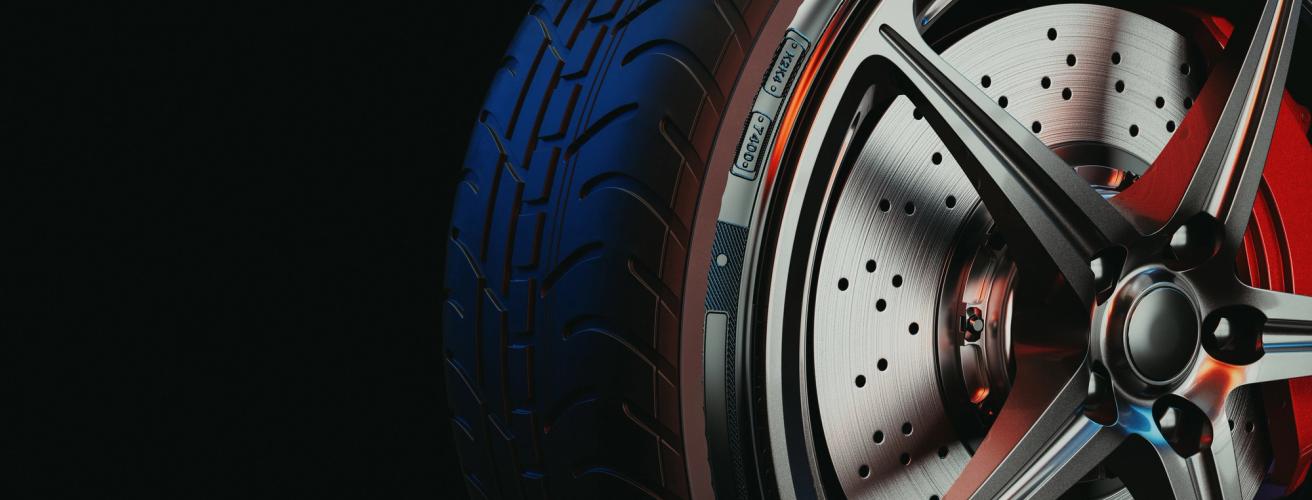The Evolution of Sports Rims: A Journey Through Innovation and Style

Sports rims, or wheels, have come a long way from their humble beginnings. Over the decades, these essential automotive components have undergone significant transformations, driven by advancements in technology, evolving materials, and a growing emphasis on performance and aesthetics. Let’s take a closer look at the fascinating journey of sports rims and how they’ve shaped the automotive world.
The Early Years: Steel Dominance
In the early days of automotive manufacturing, steel was the material of choice for wheels. Steel rims were robust, affordable, and easy to produce, making them a practical option for the mass market. However, they were heavy, which negatively impacted vehicle performance, particularly in sports cars where speed and agility were paramount.
Pros:
- High strength and durability
- Cost-effective production
- Resistant to damage from road debris
Cons:
- Heavy weight leading to reduced fuel efficiency and slower acceleration
- Limited design flexibility
- Susceptible to rust without proper treatment
The Aluminum Revolution: Lighter and Stronger
The mid-20th century saw the emergence of aluminum alloy wheels, marking a significant leap forward in wheel technology. Lighter than steel, aluminum alloy rims improved vehicle handling, acceleration, and fuel efficiency. This innovation coincided with the rise of motorsports, where the demand for high-performance components was skyrocketing.
Pros:
- Lightweight construction improves performance
- Better heat dissipation, reducing brake fade
- Corrosion-resistant with proper coatings
- Enhanced aesthetic appeal with intricate designs
Cons:
- More expensive to produce than steel
- Can crack under extreme stress instead of bending
- Requires specialized maintenance to prevent corrosion from road salts
- Requires tooling for every design and size. Minimum order quantity required.
Magnesium Wheels: The Motorsport Pioneer
In the 1960s and 1970s, magnesium wheels, or “mag wheels,” became synonymous with high-performance sports cars and racing. Magnesium is even lighter than aluminum, making it a favorite in motorsports where every gram counts. However, magnesium rims were prone to corrosion and required meticulous care.
Pros:
- Ultra-lightweight for unparalleled performance
- Excellent thermal conductivity
- Ideal for racing applications
Cons:
- Highly flammable under extreme heat conditions
- Prone to corrosion without specialized coatings
- Expensive and less durable for everyday use
Carbon Fiber: The Modern Marvel
In recent decades, carbon fiber has emerged as a game-changer in sports rim technology. This advanced composite material combines exceptional strength with an incredibly low weight. Carbon fiber rims are primarily found in high-end sports cars and racing applications due to their superior performance and high cost.
Pros:
- Unmatched strength-to-weight ratio
- Enhanced performance through reduced unsprung weight
- Eye-catching designs and premium aesthetics
Cons:
- Extremely expensive to manufacture
- Susceptible to damage from road impacts
- Repairs are costly and sometimes unfeasible
Forged Aluminum: The Perfect Balance
Forged aluminum wheels represent a happy medium between performance, durability, and cost. Using high-pressure forging techniques, these rims achieve superior strength and reduced weight compared to cast aluminum wheels. Forged rims are highly popular among automotive enthusiasts and luxury car owners.
Pros:
- Superior strength and durability
- Lightweight construction for improved performance
- Wide range of design and customization options
Cons:
- More expensive than cast aluminum wheels
- Manufacturing process is energy-intensive
- Limited accessibility in lower price brackets
The Road Ahead: Emerging Technologies
As we move further into the 21st century, the evolution of sports rims shows no signs of slowing down. New materials, such as graphene-infused composites and advanced alloys, promise to push the boundaries of performance and efficiency even further. Additionally, innovations in manufacturing techniques, like 3D printing, are opening up new possibilities for bespoke designs and rapid prototyping.
Conclusion
From the rugged steel wheels of the past to the cutting-edge carbon fiber and forged aluminum rims of today, the evolution of sports rims highlights the relentless pursuit of excellence in automotive engineering. Each material and technology has brought its own set of advantages and challenges, shaping the way we drive and experience cars. As technology continues to evolve, one thing is certain: sports rims will remain at the forefront of performance and style, inspiring generations of automotive enthusiasts around the world.


